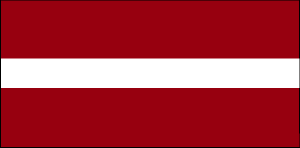
|
Latvia
Background:
After a brief period of independence between the two World Wars, Latvia
was
annexed by the USSR in 1940. It reestablished its independence in
1991
following the breakup of the Soviet Union. Although the last Russian
troops
left in 1994, the status of the Russian minority (some 30% of the
population)
remains of concern to Moscow. Latvia continues to revamp its
economy for
eventual integration into various Western European political
and economic
institutions.
|

Climate and Terrain:
Climate: Maritime; wet, moderate winters.
Terrain: Low plain.
Natural resources: Peat, limestone, dolomite, hydropower, wood, arable
land,
minimal; amber.
|
|
|
Statistics: Telephones - main lines in use: 734,693. Telephones - mobile cellular: 401,263. Radio broadcast stations: AM 8, FM 56, shortwave 1. Radios: 1.76 million. Television broadcast stations: 44 (plus 31 repeaters). Televisions: 1.22 million. Internet users: 310,000. Railways: Total: 2,412 km. Highways: Total: 59,178 km, paved: 22,843 km, unpaved: 36,335 km. Airports: 25, with paved runways: 13, with unpaved runways: 12. |
|